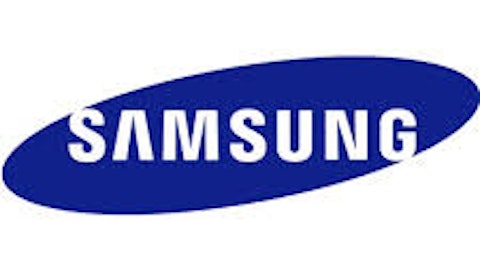Falling yields and low interest rates have been a boom for the economy and stock market. Yet, every good party must come to an end. In the middle of 2012, the 30 year treasury yield started to rise and utility yields started to fall. A number of utilities face a two-sided storm; one from distributed generation and another from rising yields.
30 Year Treasury Rate data by YCharts
The importance of the 30 year treasury
The U.S. government can use any power within its means to meet its debt obligations, including its military. A corporation is only an entity within a nation. It is for this reason that the U.S. government’s 30 year treasury is considered a risk free asset. If the risk free rate rises 10%, then riskier assets that have a higher possibility of going bankrupt will fall in value.

Over the past decade utility stocks like Sempra Energy (NYSE:SRE) and PG&E Corporation (NYSE:PCG) have been a great find for yield-seeking investors. The above chart shows how their yields have steadily increased as the government interest rate has fallen. In 2012 things started to change. The 30 year yield has spiked 23%, and these utilities’ yields are down -14% and -10%, respectively. This pain is not expected to end any time soon. Treasury yields are still at multi-decade lows, and the government is expected to raise rates further, as quantitative easing is almost over.
30 Year Treasury Rate data by YCharts
The threat from solar
California isn’t cheap, and its consumers pay some of the highest electricity rates in the nation. The cost of electricity continues to increase, and the recent shut down of a California nuclear plant only adds more supply pressure. These factors help to make solar panels a very economical choice for homeowners in California. With banks offering financing for solar installations, solar panels are a very attractive investment.
Sempra Energy (NYSE:SRE) is exposed to California through its San Diego Gas & Electric subsidiary and PG&E Corporation (NYSE:PCG) is based in California. Both companies face competition from the millions of homeowners who are able to place solar systems on their homes.
PG&E Corporation (NYSE:PCG) isn’t a high-growth company. It has a five year earnings per share (EPS) growth rate of -9.13% and a five year revenue growth rate of just 1.7%. It has managed to boost its dividend with a five-year dividend growth rate of 4.46%, but this cannot continue indefinitely. Dividends come from profits and revenue. Shrinking profits mean that its dividend will eventually stop growing.
Sempra Energy (NYSE:SRE) is in a similar situation. Its five year revenue growth rate is -2.15% and its five year EPS growth rate is -2.73%, while its five year dividend growth rate is 13.08%. Investors should not be fooled by its growing dividend. With the threat of growing solar distribution and the need for more capital investment to upgrade California’s electricity network, both companies are facing challenges that will hamper their ability to grow their dividends.
Look outside traditional utilities
To find quality dividends it is important to look outside of utilities to other firms like Wal-Mart Stores, Inc. (NYSE:WMT) and Intel Corporation (NASDAQ:INTC). Wal-Mart Stores, Inc. (NYSE:WMT) and Intel Corporation (NASDAQ:INTC) are on the other side of the solar equation. Over 100 of the company’s California store have solar panels. Intel has also installed solar panels on a number of its facilities.
Wal-Mart Stores, Inc. (NYSE:WMT) has expanded its business by heading into the emerging markets. From Mexico to China it has become one of the most powerful retailers in the globe. Going forward it will not grow as quickly, but it will grow. Its large size helps it to push cost increases onto its customers and expand its dividend along with inflation. With a healthy total debt to equity ratio of 0.81, return on investment (ROI) of 15.5% and return on assets (ROA) of 8.8%, it is able to provide a strong dividend for investors.
Intel Corporation (NASDAQ:INTC) is one of the major designers of central processing units (CPUs) for electronic devices. It has faced challenges from other chip designers who use less power intensive designs, but now Intel realizes that the market wants efficiency and performance. It is rolling out new chip designs over the next couple years that will help it to gain market share in the mobile market. Mobile growth will help it to further expand its dividend. The company is well run with a low total debt to equity ratio of 0.26, a ROI of 16.0% and a ROA of 12.4%.
Conclusion
Wal-Mart Stores, Inc. (NYSE:WMT) has a strong future ahead as its large size will allow it to grow its dividend along with inflation. Intel has a positive future as its newest product designs will give it more sales in the mobile sphere. Traditional utilities like PG&E Corporation (NYSE:PCG) and Sempra Energy (NYSE:SRE) are different story. In California they face threats from growing solar generation, and rising government yields have already brought down their yields. Dividend investing isn’t always easy, but a little investigation goes a long way.
The article Dividend Investors Be Warned originally appeared on Fool.com and is written by Joshua Bondy.
Joshua Bondy has no position in any stocks mentioned. The Motley Fool recommends Intel. The Motley Fool owns shares of Intel. Joshua is a member of The Motley Fool Blog Network — entries represent the personal opinion of the blogger and are not formally edited.
Copyright © 1995 – 2013 The Motley Fool, LLC. All rights reserved. The Motley Fool has a disclosure policy.







